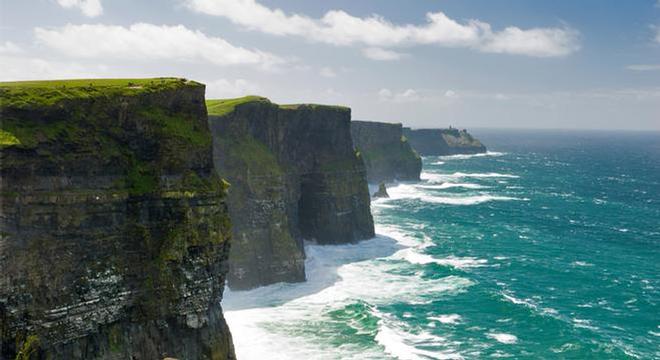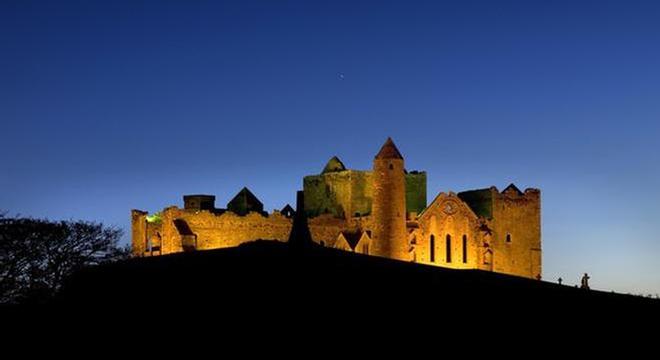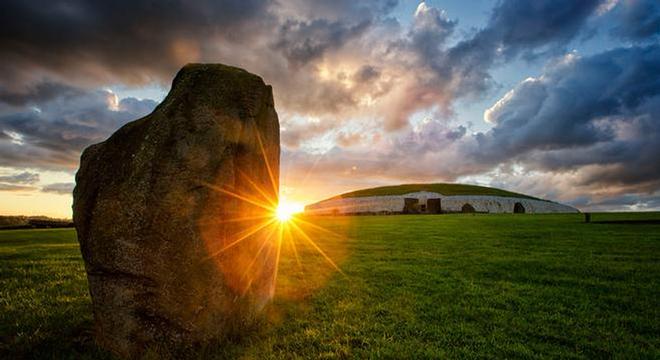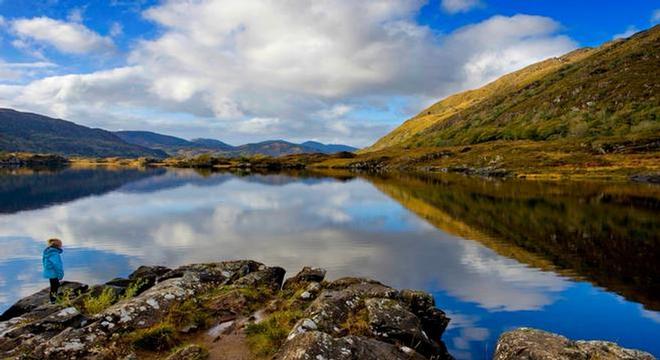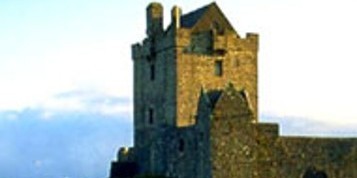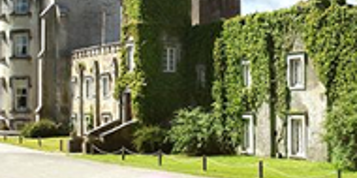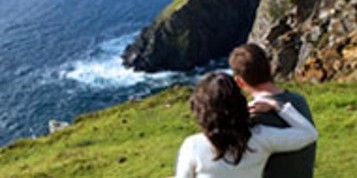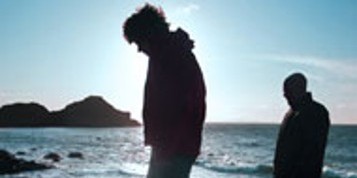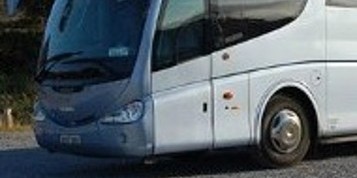HIGHLIGHTS OF IRELAND
Highlights of Ireland 14 nights
The Highlights of Ireland self-drive 14 night tour is one of our most popular tours and is based on Ireland’s most iconic and world renowned attractions
15% Off ALL rail and self-drive vacations! Book by April 30th!
Book ANY self-drive or rail vacation by April 30th and enjoy 15% off! Don't miss out - explore more for less!
*CIE tours and Knitting tours not included.
-V3.png)
The Highlights of Ireland Tour, our most sought after vacation, is a 14 night tour that can be started from any Irish Airport and is specifically tailored to include many of the most popular visitor attractions in the country. With attractions such as Trinity College and Kilmainham Gaol in the capital, Powerscourt House, Glendalough, Kilkenny Castle and the Waterford Crystal exhibition in the south east, Cobh heritage centre, Blarney Castle & Kinsale in the south as well as the dingle peninsula, Ring of kerry and Killarney in Kerry. In Clare you'll visit the famous Cliffs of Moher and the Burren landscape. just above Clare is Galway, the Aran islands and Connemara and finally, just 45 minutes north of Dublin, you'll find the ancient Megalithic Tombs at Newgrange, Irelands most visited ancient attraction. Depending on where you fly into, the route taken will change accordingly.
The memories made whilst here will last a lifetime, from the incredible scenery, the culture and the people, this is vacation you'll never forget!
Speaking of the people, as Irish we pride ourselves on being some of the friendliest and welcoming in the world and although Ireland is not a big country, you'll undoubtedly notice the differences in accents and dialects as you travel across it.
The major advantage of having 14 nights in the southern half of the country is that it alows you time to get to know the locals at a more relaxed pace than that of the shorter duration tours.
Overnights for this tour:
- County Wicklow for 1 night
- Waterford or Kilkenny for 2 nights
- Kinsale, County Cork for 2 nights
- Killarney, County Kerry for 2 nights
- Dingle, County Kerry for 1 night
- County Clare for 1 night
- Connemara for 2 nights
- Galway for 1 night
- Dublin for 2 nights
Included in your price:
- Free calls to your personal Ireland vacation specialist
- 14 nights accommodation on a B&B basis
- Road map of Ireland
- Discounted admission to attractions throughout Ireland
Car Rental:
Rental of a economy-size car. Included with your car is all compulsory insurances - Collision Damage Waiver insurance (CDW with an excess/deductible), theft protection insurance, location fee of €30, Road fund tax, sales tax at 13.5%, unlimited free mileage, third party liability insurance, 24 hour peace of mind breakdown cover.
Occupancy:
Prices are per person based on 2 persons in each room with full Irish breakfast and taxes included. A single supplement will apply to rooms and car rental in the case of single occupancy.
Currency:
Please note that we charge in Euros (€). Prices in other currencies are for indication only and subject to fluctuation.
Itinerary for the 14 night Highlights of Ireland self-drive tour
This is a brief summary of the actual itinerary, which will be provided upon booking of the tour.
Day 1: Dublin to County Wicklow
Your journey starts travelling South through County Wicklow, the "Garden of Ireland". Your first stop will be Powerscourt House and Gardens, an 18th Century Palladian House at the base of the Wicklow Mountains. Next up is Glendalough, "the glen of the two lakes", where you will visit an ancient monastic settlement. The striking landscape of the lakes and sheer cliff faces were carved out by glaciers during the ice age. This settlement has been a tourist attraction and pilgrimage location since its founding in the 6th century by St. Kevin. Onwards now to Avondale House, a museum to one of the most significant Irish political figures Charles Stewart Parnell, who was born in the house in 1846. Continuing on, you reach Avoca, home of the world famous Avoca Handweavers factory. While there you can tour the factory, visit the Avoca shop, or just enjoy the pretty little town, which was once used to film the TV show "Ballykissangel".
Day 2: Wicklow to Kilkenny & St.Canice's Cathedral
Today you head south to Wexford, then on to Kilkenny. Your first stop along the way is Enniscorthy, an originally Norman settlement on the bank of the River Slaney. The clear centrepiece of the town, the Norman castle, was completed in 1205 and is now used as the County Wexford Folk museum. Once finished there, it’s down to the eastern corner of Ireland, ancestral home of the Kennedy's, where you can visit the Kennedy Homestead, birthplace of President John F. Kennedy's great-grandfather Patrick Kennedy! Also nearby, the Dunbrody Famine Ship, a Interactive tour give an insightful look at what life was like for those forced to make the long journey to the US or Canada 150 years ago. Onwards now to the Interpretive Centre for Waterford Crystal, which has been open since the closure of the Waterford Crystal factory. Kilkenny is next, known as Irelands medieval capital. The city of Kilkenny was established more than 1500 years ago and is not too big to be explored on foot. It is home to such sights as Kilkenny Castle, dating back to the 12th century and Saint Canice's Cathedral, one of Irelands largest Cathedrals. Its gothic design comes as a result of the rebuild that it underwent in the 13th century. Also worth a visit is the Smithwick's Brewery Tour in the centre of the city.
Day 3: Kilkenny and the Rock of Cashel
If you didn't yesterday, you must make sure to visit the Dunbrody famine ship, Kennedy Homestead and Waterford Crystal Interpretive Centre, alternatively, a day trip to County Tipperary to visit two its major attractions. First up, the Rock of Cashel, once the seat of the king of Munster and the province's Capital. Rising up above the plain, the rock itself has much history behind it. St. Patrick himself was said to have come to this spot to preach, and converted King Aenghus in the 5th century. Next up is Cahir castle, just 10 miles down the road; this was once a significant stronghold of the Butler family and with its keep, tower and much of the defensive structures still intact. it is one of Irelands best preserved castles.
Day 4: Kilkenny to Kinsale, County Cork
On to County Tipperary now, where you can visit the Rock of Cashel and Cahir Castle if you haven't already, before heading to County Cork. East of Cork city, you'll find the town of Cobh, home to one of the largest natural Harbours in the world, this was the last port the Titanic docked at, before heading out on its maiden and final voyage. A Visit to the Cobh heritage centre is highly advised also, as its very informative about the Titanic, the sinking of the Lusitania and the history of Irish emigration to America and Australia. Leaving Cobh you head to Kinsale, more than just a pretty little fishing village, it also has an International Museum of Wine and the Charles fort is also nearby.
Day 5: Kinsale and Charles Fort
If you didn't get to visit these attractions yesterday, then you'll see them today! Built in the 1500s, the Desmond Castle and the International museum of wine both have had many uses. It was once used as an Arsenal by Don Juan Aguilla in 1601, when the Spanish occupied the town for a hundred days before the battle of Kinsale. Years later, prisoners of war were kept in the castle, and it became known as the "French Prison" due to the high numbers of French navy kept there. During the American war of independence, many American crews were imprisoned there. As mentioned, a visit to Charles fort is also highly advised. Also nearby is St. Multose church, which was built in 1190 and is well worth a visit.
Day 6: Kinsale to Killarney
There are two routes to choose from on your Journey to Killarney, the longer, more scenic coastal route or the shorter route by Blarney Castle. Taking the longer Route, you'll head to Bantry where you can visit the French Armada Centre and the Bantry House and Gardens, as well as the most southern point in Ireland, Mizen Head. After Bantry, it’s northward to Killarney through the Healy Pass, across the Caha Mountains which divide Cork and Kerry. After this, it's onwards to Kenmare, which has a small heritage centre worth a visit! The alternative, shorter route to Killarney goes by Blarney Castle, where you can climb the ramparts and kiss the famed Blarney stone. Reaching Killarney, there are many options for things to do, Killarney’s incredible Lakes and landscapes have inspired artists for centuries. A must visit is the Killarney national park which has numerous scenic trails and walks. Other options include Ross castle, the gap of Dunloe, or simply just enjoy the atmosphere in one of many traditional Irish pubs!
Day 7: The Ring of Kerry and Muckross House
For today’s excursion, there are other options in the full itinerary; however the most prominent and advised would be the Ring of Kerry driving tour. The Journey itself covers some of the country's most impressive scenery around the Iveragh Peninsula. Brilliant Mountains, valleys and coastal views will make this drive one of the most memorable parts of this tour. If a break from all the driving sounds good to you, a bus tour along this route can be organised for you. Along the Peninsula drive you'll arrive at Muckross House, a magnificent Victorian Mansion, which was finished in 1843. Set on the Eastern shore of Muckross Lake and overlooked by the daunting Torc and Mangerton mountains, the house has a spectacular location and the walks surrounding it are unmissable. Another popular option for your third day would be a a tour of the Gap of Dunloe by pony and trap, stopping at Lord Brandon’s cottage for a bite to eat, then returning to Killarney by boat through the lakes!
Day 8: Killarney to the Dingle Peninsula
Leaving Killarney its onwards to Dingle today and of course the Dingle Peninsula, which has more historic sites, scenic mountains and antiquities than any other part of Ireland. Dingle is the most western town in all of Europe and is a massive tourist attraction, as many come to learn Gaelic, the Irish tongue, in "A Flor-Gaeltacht" an Irish speaking region. Next up is Annascaul, a small village with some historic figures tied to it, such as Jerome Connor, the famous Sculptor and Tom Crean, a local hero who accompanied Shackleton and Scott on three Antarctic expeditions, including Scott’s failed attempt to reach the south Pole. Upon returning to Annascaul, Crean opened "The South Pole Inn" which is still in business today and is well worth a visit! Also nearby, Minard Castle, which is said to have been built by the Knight of Kerry and is the largest fort on the Peninsula. Passing Dingle we visit Dunbeag Promontory Fort, this site is fascinating as the first settlement here was in the late bronze age, around 800BC. Slea Head is next, where you can visit Dun an Oir, the Fort of Gold. It was here that 600 Irish and Spanish soldiers surrendered to Lord Grey and were massacred by his soldiers. Finally heading back to Dingle, you can relax for the evening in one of the many pubs and restaurants.
Day 9: Dingle to the West coast of County Clare
Departing from Dingle, you head towards Brandon to drive over the famed Conor Pass, the highest mountain pass in all of Ireland. At the peak, you can see both Brandon and Tralee bays to the north, and Dingle Bay to the South. Continuing on to Tralee and Tarbert where you can take a ferry across to County Clare, where you will head northwards to the Cliffs of Moher. Undoubtedly one of Irelands most recognisable attractions, the Cliffs of Moher are one of the most daunting sights in all of Ireland. After that its onwards to Doolin, a little village in Clare, world famous for its food, music and atmosphere. Just north of the cliffs are anther two popular tourist attractions, the Burren Region and Poulnabrone Dolmen tombs. If you start the Day a little earlier, there’s a route through Adare and Limerick for this day, which will allow you to also visit Bunratty Castle and folk park.
Day 10: Clare to the Connemara region
Today you step into the incredible beauty of the Connemara region, the furthest western edge of Ireland and Europe. Heading through Galway city, you can stop and visit some of its many attractions if you wish, however you will return after Connemara and have adequate time there. Reaching Connemara the dramatic landscape is made up of lakes,
Mountains, woodlands and rugged coastline. Make sure to visit the Connemara National park, Kylemore abbey, Lough Inagh valley and the well-known Sky road near the town of
Clifden. If you take a trip to the fishing village of Roundstone, you can see how a traditional Irish drum, a Bodhran, is made! Alternatively you could take a Ferry to the Aran
Islands, some of the most isolated land in Ireland. Once there, you can take a Horse and trap un to the pre-Christian clifftop fort of Dun Aengus, a truly unbelievable sight.
Day 11: Connemara and South Mayo
If you didn’t make it to the Aran Islands yesterday, then definitely give them a visit today. Otherwise, Head to the village of Cong, get a ferry to Inchagoill Island to explore the ruins. Cong was also the setting for the movie "The Quiet Man" starring John Wayne and Maureen O'Hara. Leaving Cong and heading northwest, you'll reach the fjord at Killary harbour, or better yet, take a catamaran cruise through Irelands only fjord. If you wish to have a longer day, you can head to Croagh Patrick, Irelands Holy Mountain on which St. Patrick was said to have fasted for 40 Days.
Day 12: Connemara to Galway City
Heading east today, you return to Galway city. Galway itself has been long known as the cultural and festival capital of Ireland and if you have a night out in the Quays area, you'll understand why! Some other historical sites in Galway include the largest Medieval parish church in Ireland, The Collegiate Church of St NIcholas of Myra, which dates back to 1320. Its said that Christopher Colombus himself once prayed in this church in 1477. The Galway Cathedral, the Spanish Arch and Eyre square are all worth a look as well if you have the time!
Day 13: Galway to Dublin via Clonmacnoise
On the way to Dublin, you'll take in some of Irelands most historical and famous landmarks. First of these is Clonmacnoise, an Ancient Monastic settlement founded by Saint Ciaran in the 6th Century. Amongst the settlement you'll find Early Christian grave slabs, High crosses, two round towers and the ruins of a cathedral. After that, travel east to one of the great wonders of the ancient world, Newgrange. Older than Stonehenge and the pyramids of Egypt, Newgrange is a passage tomb and a must see tourist
attraction. Heading south, next up is Dublin city. There’s a large number of walking tours to choose from in Dublin, some of the most popular being the "literary Pub crawl" and the "historical walking tour". We'd also advise the hop on hop off bus tour which stops at many of Dublin’s major attractions!
Day 14: Dublin City Centre and Trinity College
For your last day in Dublin you will be continuing your sightseeing in Dublin with the chance to visit the Guinness Storehouse, the GPO Museum and Kilmaninham Gaol amongst other locations. Make sure to visit Christ church cathedral, founded in 1030 by Sitric, the king of Dublin at the time, not to mention the James Joyce Centre and Dublin Writers Museum. You may also want to do some shopping or visit one of many Irish pubs or cafes. The Temple bar area's streets are lined with pubs, restaurants and cafes to suit every taste. Its narrow cobble streets mean there’s always an amazing atmosphere in the area as well! Temple bar is also a great area for nightlife, if you want to have a few pints on your last night!
Day 15: End of Tour
Check out of your Hotel and bid farewell (for now) to Ireland!
15% Off ALL rail and self-drive vacations! Book by April 30th!
Book ANY self-drive or rail vacation by April 30th and enjoy 15% off! Don't miss out - explore more for less!
*CIE tours and Knitting tours not included.
-V3.png)
Accommodation & Car
| B&Bs | 3*Hotels | 4*Hotels | Combination | |
|---|---|---|---|---|
| Jan-Mar & Nov-Dec | €1,700 | €2,070 | €2,860 | €2,230 |
| April & October | €1,690 | €2,390 | €3,090 | €2,540 |
| May-June | €1,890 | €2,860 | €3,730 | €2,860 |
| July & September | €2,090 | €3,080 | €3,960 | €3,090 |
| August | €2,090 | €3,080 | €3,960 | €3,090 |
- Please note prices are per person based on 2 persons in each room with full Irish breakfast and taxes included.
- The Combination package includes 6 Nights in 3*** Hotels, 4 nights in Luxury Manor House Hotels & 4 Nights in our hand-picked B&B's.
- Children Sharing with 2 adults (aged 2-11) pay 40% of the Adult option.
- Children under the age of 2 are free when sharing with 2 Adults.
- Your Accommodation & Car Rental Package rate includes an Economy class car e.g., Opel Corsa or Fiat Punto.
- Included with your car is all compulsory insurances - Collision Damage Waiver insurance (CDW with an excess/deductible), theft protection insurance, location fee of €30, Road fund tax, sales tax at 13.5%, unlimited free mileage, third party liability insurance, 24 hour peace of mind break down cover.
